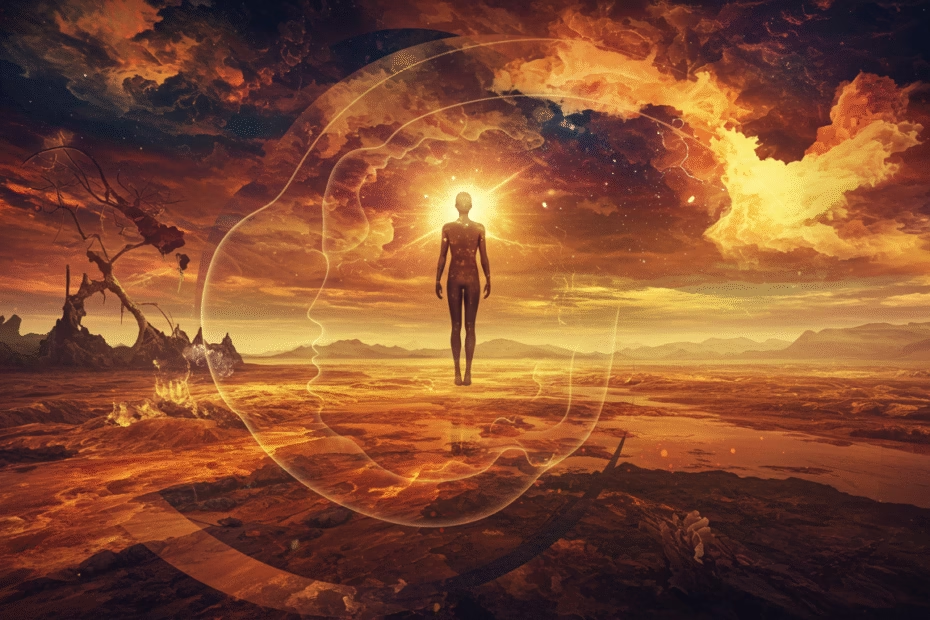Introduction
Dreams Across Sleep Stages: The Science of Nocturnal Mental Activity.
Dreams have fascinated humanity since ancient times, inspiring art, literature, religious beliefs, and scientific inquiry. While often associated exclusively with REM (Rapid Eye Movement) sleep, modern research reveals that dreaming can occur across different sleep stages, though with varying characteristics and intensities. This article explores the relationship between dreams and sleep architecture, examining how our nocturnal mental experiences shift throughout the night.
Understanding Sleep Architecture
Before delving into dreams, it’s essential to understand the basic structure of sleep. A typical night’s sleep consists of multiple cycles, each lasting approximately 90-110 minutes and comprising different stages:
NREM (Non-Rapid Eye Movement) Sleep
- N1: The transitional stage between wakefulness and sleep
- N2: Light sleep with characteristic sleep spindles and K-complexes
- N3: Deep sleep (formerly divided into stages 3 and 4), also called slow-wave sleep (SWS)
REM Sleep
Characterized by rapid eye movements, increased brain activity, muscle atonia, and vivid dreaming
Dreams in Different Sleep Stages
REM Sleep Dreams
REM sleep produces our most vivid, narrative, and emotionally charged dreams. These dreams typically feature:
- Complex storylines and scenarios
- Visual and auditory experiences that feel remarkably real
- Strong emotional content
- Bizarre, impossible, or illogical elements
- Character development and social interactions
- First-person perspective and sense of agency
Neurologically, REM sleep is characterized by brain activity patterns similar to wakefulness. The prefrontal cortex (responsible for logical reasoning) shows reduced activity, while emotional and visual processing centers remain highly active. This may explain the emotionally intense yet often illogical nature of REM dreams.
The brain stem simultaneously triggers muscle paralysis (REM atonia) to prevent the physical enactment of dreams—a crucial safety mechanism that fails in disorders like REM Sleep Behavior Disorder.
NREM Sleep Dreams
Contrary to earlier beliefs that dreaming was exclusive to REM sleep, research now confirms that dreaming occurs in NREM stages as well, though with distinct characteristics:
N1 (Light Sleep) Dreams
- Hypnagogic hallucinations: The transitional experiences between wakefulness and sleep
- Often fragmentary, abstract, or geometric
- May include sensations of falling, flying, or floating
- Sometimes incorporate external stimuli from the environment
- Frequently forgotten upon awakening
N2 (Light Sleep) Dreams
- Generally, less vivid and emotional than REM dreams
- More conceptual and thought-like
- Often mundane, reflecting daily activities
- Less narrative structure and bizarre elements
- May include sleep spindles that help consolidate memories
N3 (Deep Sleep) Dreams
- Less frequent but still possible
- Typically abstract, fragmented, or thought-like
- Less visual and more conceptual
- Often difficult to recall
- May include night terrors in children, though these aren’t true dreams

Dream Content Across the Night
Sleep architecture isn’t static throughout the night. Early sleep cycles contain more N3 deep sleep, while later cycles feature extended REM periods. This progression affects dream experiences:
Early Night Dreams
- More likely to be NREM dreams
- Often reflect recent experiences and daily residue
- May process emotional content from the day
- Generally, less memorable and vivid
Late Night Dreams
- Predominantly REM dreams
- More vivid, bizarre, and emotionally intense
- May incorporate older memories and abstract associations
- More likely to be remembered upon awakening
Individual Differences in Dreaming
Dream experiences vary significantly among individuals:
- Dream recall frequency: Some people regularly remember multiple dreams, while others rarely recall any
- Dream vividness: Dreams range from fuzzy and indistinct to hyper-realistic
- Lucid dreaming capacity: The ability to become aware that one is dreaming and sometimes control dream content
- Nightmare prevalence: The frequency and intensity of disturbing dreams
These differences stem from various factors, including genetics, personality traits, stress levels, sleep quality, and neurological factors.
Clinical Relevance
Understanding the relationship between dreams and sleep stages has important clinical applications:
Sleep Disorders and Dreams
- REM Sleep Behavior Disorder: Absence of muscle atonia during REM sleep, allowing patients to physically act out dreams
- Narcolepsy: Characterized by disrupted sleep architecture and sometimes hypnagogic hallucinations
- Night Terrors: Occur during N3 sleep and involve intense fear but aren’t true dreams
- Nightmare Disorder: Recurring disturbing dreams that cause significant distress
Therapeutic Approaches
- Dream interpretation: Used in some psychotherapeutic approaches to gain insight into unconscious processes
- Imagery rehearsal therapy: For recurring nightmares
- Lucid dream therapy: Teaching dream awareness to transform nightmare content

Theories on Dream Function
Why we dream remains one of neuroscience’s enduring questions. Major theories include:
Memory Consolidation
Dreams may help process and integrate new information into existing memory networks, particularly emotional memories. The different neurochemical environments of REM and NREM sleep may facilitate different aspects of memory processing.
Emotional Regulation
Dreams, especially in REM sleep, may help process emotional experiences in a safe, simulated environment. This theory suggests dreams serve as a form of overnight therapy, reducing the emotional charge of difficult experiences.
Threat Simulation
This evolutionary perspective suggests dreams, particularly threatening ones, served as virtual rehearsal for dangerous situations, enhancing survival skills.
Neural Network Maintenance
Dreams may result from the brain’s maintenance activities, strengthening important neural connections while pruning others during sleep.
Conclusion
Dreams occur across all sleep stages but manifest differently depending on the underlying neurophysiology of each stage. REM dreams tend to be more vivid, emotional, and narrative, while NREM dreams are often more conceptual, fragmented, and thought-like. The progression of sleep stages throughout the night creates a dynamic dreamscape, with early dreams differing significantly from those occurring in the early morning hours.
As neuroscience advances, our understanding of dreams continues to evolve. Modern technologies like functional MRI and high-density EEG are providing unprecedented insights into the sleeping brain, gradually illuminating one of consciousness’s most mysterious manifestations. While much remains unknown, the relationship between dreams and sleep stages represents a crucial piece in deciphering the puzzle of why and how we dream.
Read This Article: What is Telepathy? And Method of Telepathy?
Read This Article: What is Hypnotism? How is Hypnotism Done?
If this article was helpful to you, please leave your feedback in the comment section below.

